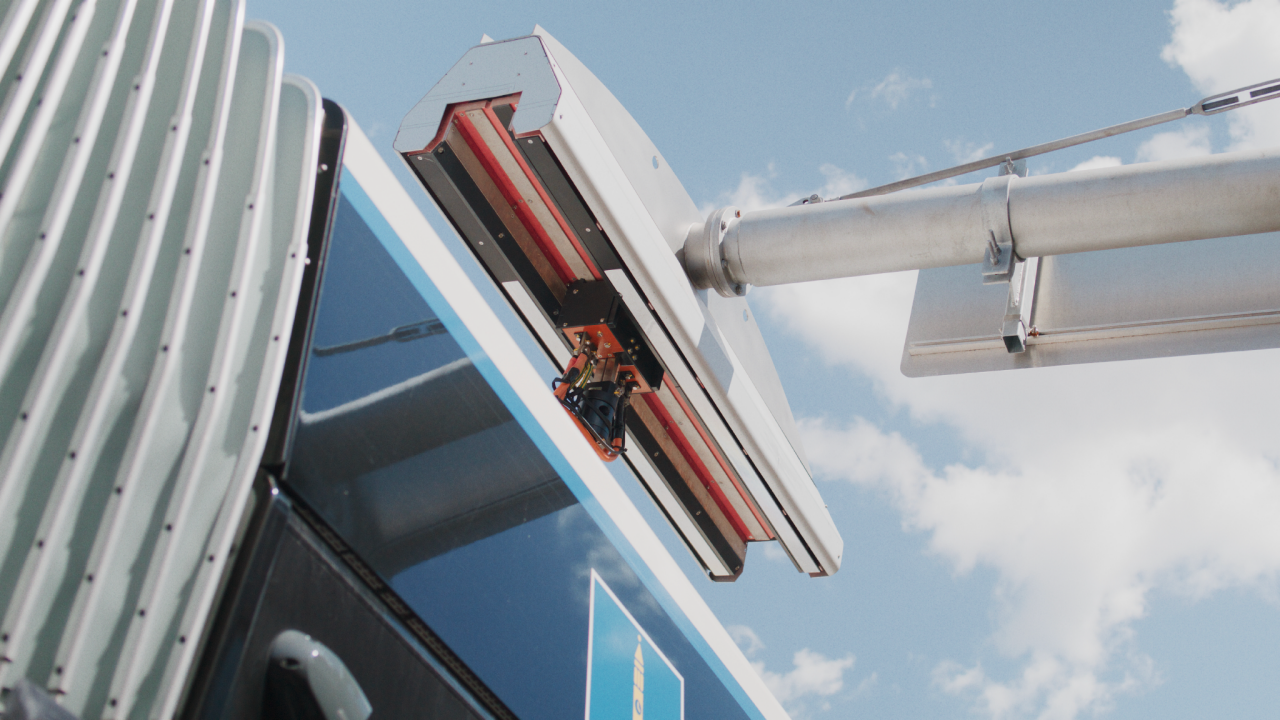Brisbane City Council is delivering the turn-up-and-go Brisbane Metro, a new fleet of electric, high‑capacity metros.
We’ve developed this video to highlight the onboard accessibility and customer features to help you to travel with confidence.
If you’re boarding a metro for the first time, there are some key things you need to know.
The metros are 24.4 metres long, approximately double the length of a standard bus.
There are three customer compartments, with all door boarding available at the first, middle and rear compartments.
For customers with wheelchairs, prams or personal mobility devices, three large mobility bays are located in the first compartment.
There is also a separated driver cabin, just before the first compartment. This means how you communicate with a driver is different to a regular bus.
To catch a metro, you will still need to hail the service, or use the help phone on the platform to request the service.
As a metro approaches the station, a unique sound will play to notify customers a metros is arriving.
Metros are also fitted with an Acoustic Vehicle Alerting System (AVAS), making it easier to hear the electric metros when travelling at low speeds.
The metro doors are self-service. To enter or exit the metro, you will need to press the yellow button located in the centre of one of the three doors. Drivers will monitor the doors and station platforms to support customers who may require assistance.
Once the doors open, please wait until other customers have exited the metro before boarding and then tapping on with your GoCard.
Each metro has an automatic ramp providing access to the first compartment and is deployed on request.
Customers with mobility requirements are encouraged to board at the first compartment door.
To request the ramp, press the blue ramp request button located on the left panel of the first compartment door.
Once the ramp is requested, an audio announcement will alert you to move back to allow the ramp to be deployed.
Ramp requested, please move back. Ramp is being deployed.
Before the ramp is deployed, the metro will lower – allowing for smoother boarding.
Once the ramp is fully extended, the doors will open, allowing you to board the metro. It’s important to note, customers with a pram or mobility device will not be able to move between compartments.
All metros are fitted with a manual ramp. If your preference is to board using a manual ramp, please use the help phone on the platform. If you are onboard the metro, you can use a help point to communicate directly to the driver to request the manual ramp.
Metros can comfortably carry 150 customers. There are 64 seats on board and space for standing room.
Hand rails and grab rails are positioned around seating and standing areas.
The first compartment has three large mobility bay areas, with eight blue flip-seats. There is also a number of support features, including railings, padded back rests and passive restraint handles.
Throughout the metro, there are 10 red priority seats and 46 blue seats, including a combination of floor level and raised seats.
The metro has a low floor design with ground level LED lighting from front to rear to support customers as they move between compartments.
There are 6 large screens located on each metro, with real-time journey information including next stop and arrival times. They will also display if the next stop or ramp has been requested.
There are 6 small LED screens throughout the metros, with scrolling next stop information.
Audio announcements will play throughout the journey to notify customers of the next stop.
Customers with hearing devices can connect to the onboard hearing loop.
Onboard buttons and information signs include braille and tactile features.
To request the next stop, press the red next stop button.
Next stop buttons are located throughout the metro. When a next stop button is pressed, a beep sound will play.
To request the automatic ramp to exit a metro, press the blue ramp request button.
There are four automatic ramp request buttons located in the first compartment in each mobility bay and near red priority seats.
When a ramp request button is pressed, an audio announcement will confirm that the ramp will deploy at the next stop.
Should you require support during your journey, there are six help points located throughout a metro.
Help points include a two-way speaker and camera to provide direct communication between you and the driver. To call the driver, press the red button and hold for three seconds.
The three compartments are connected by two articulation points. You may stand in this area while the metro is moving.
We encourage you to take care in this area, as the floor of the articulation joint will rotate as the metro moves.
There are onboard in-built USB charging points as well as onboard Wi‑Fi for you to use.
We look forward to welcoming you on board.




